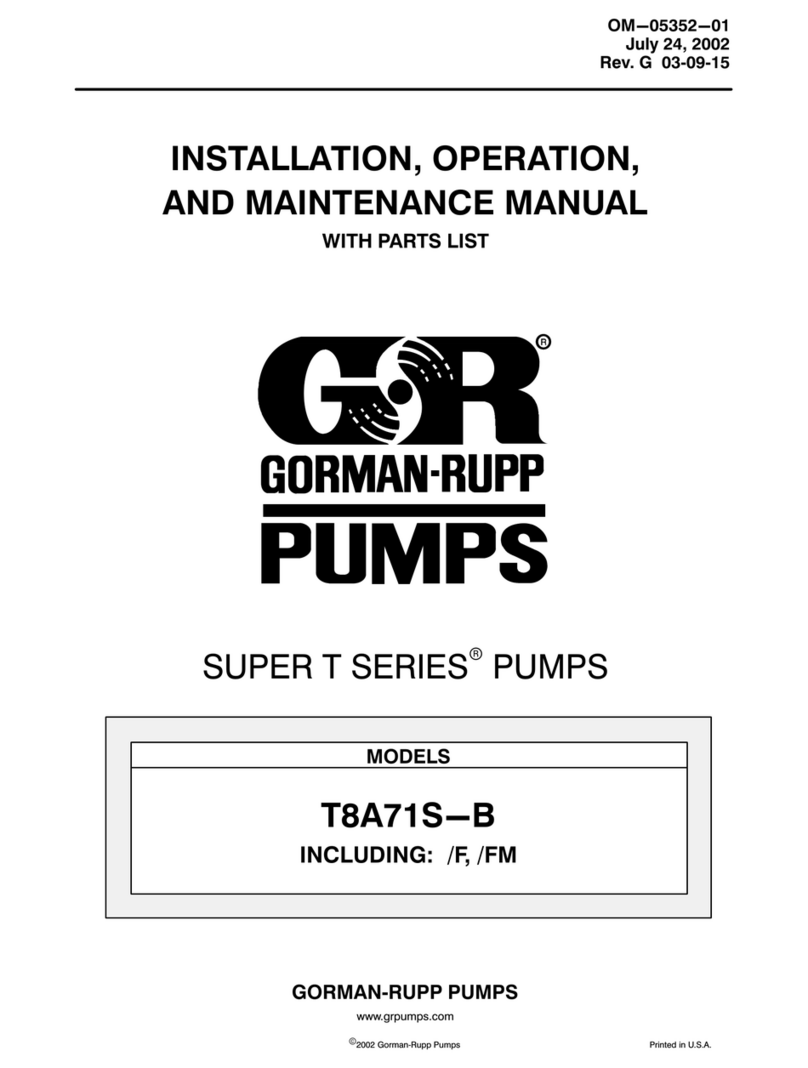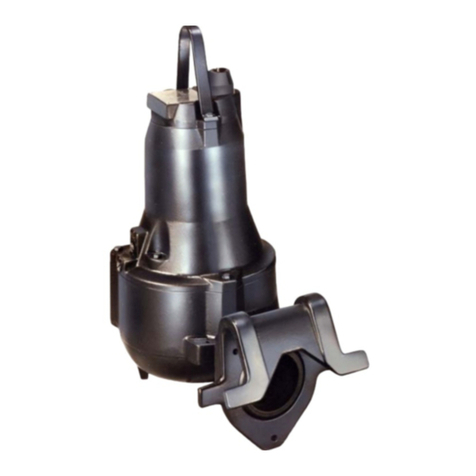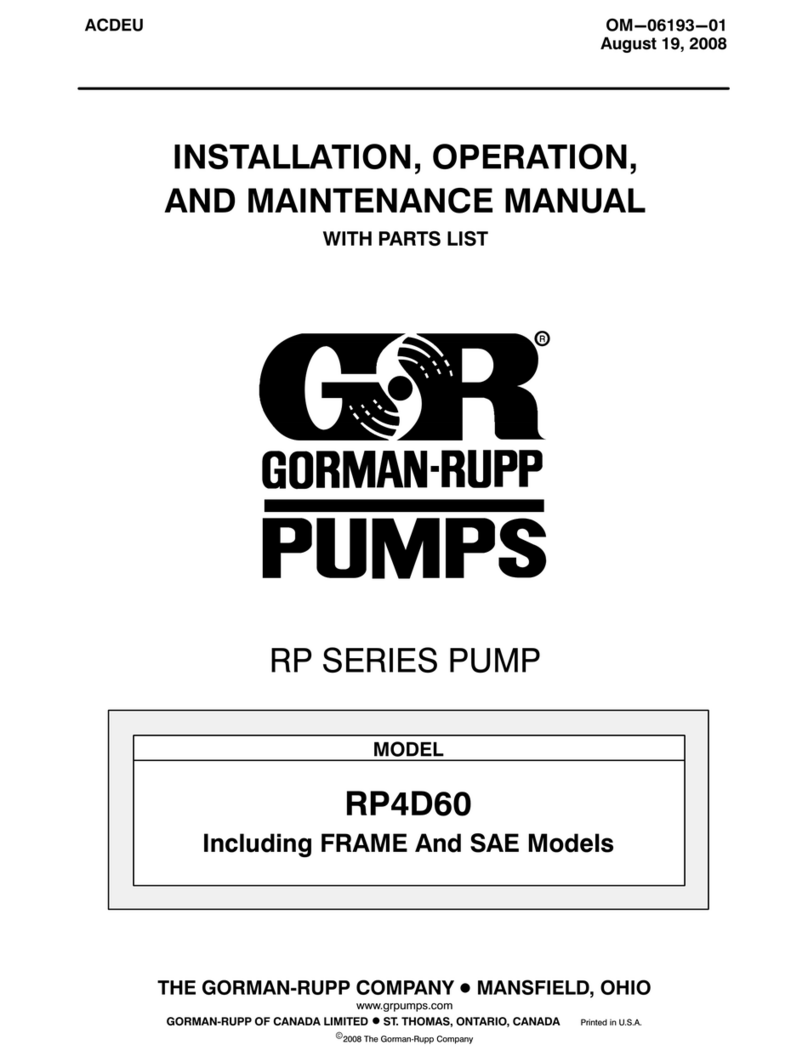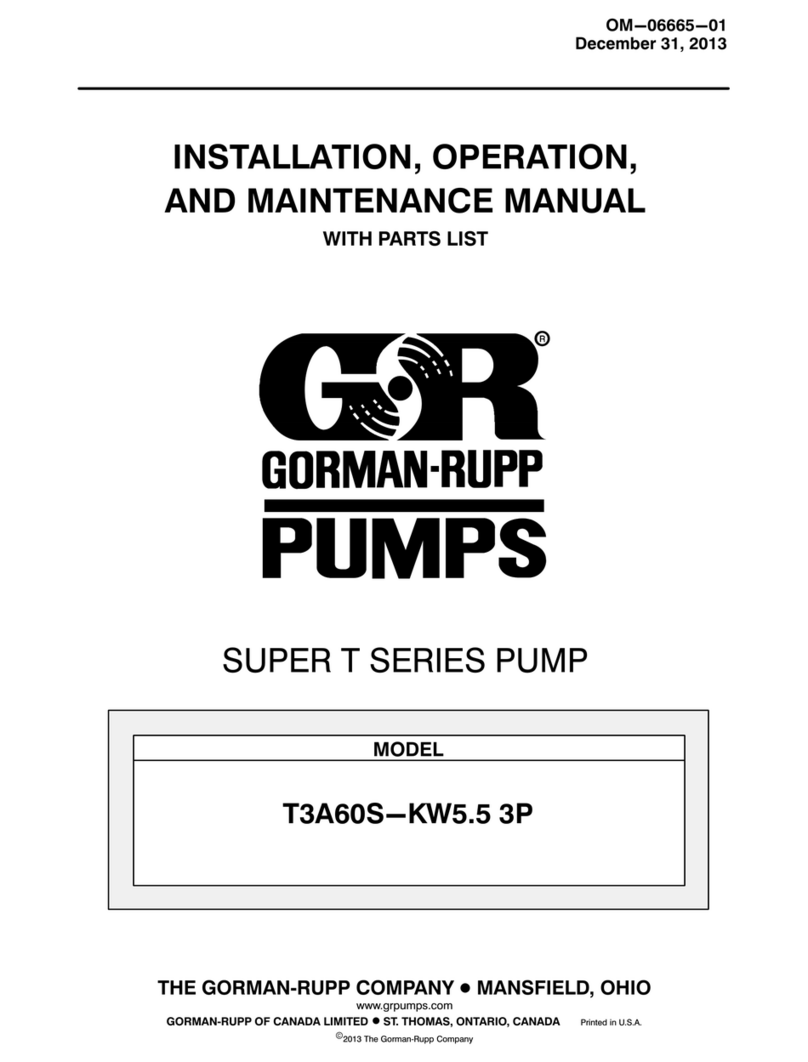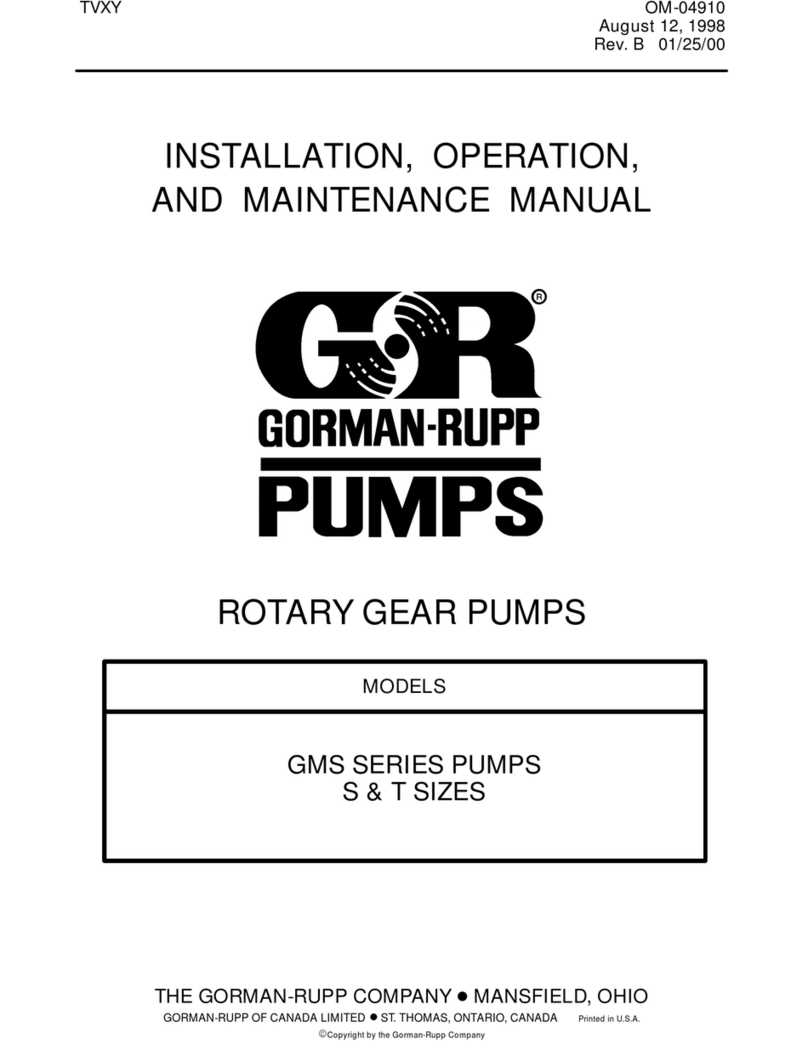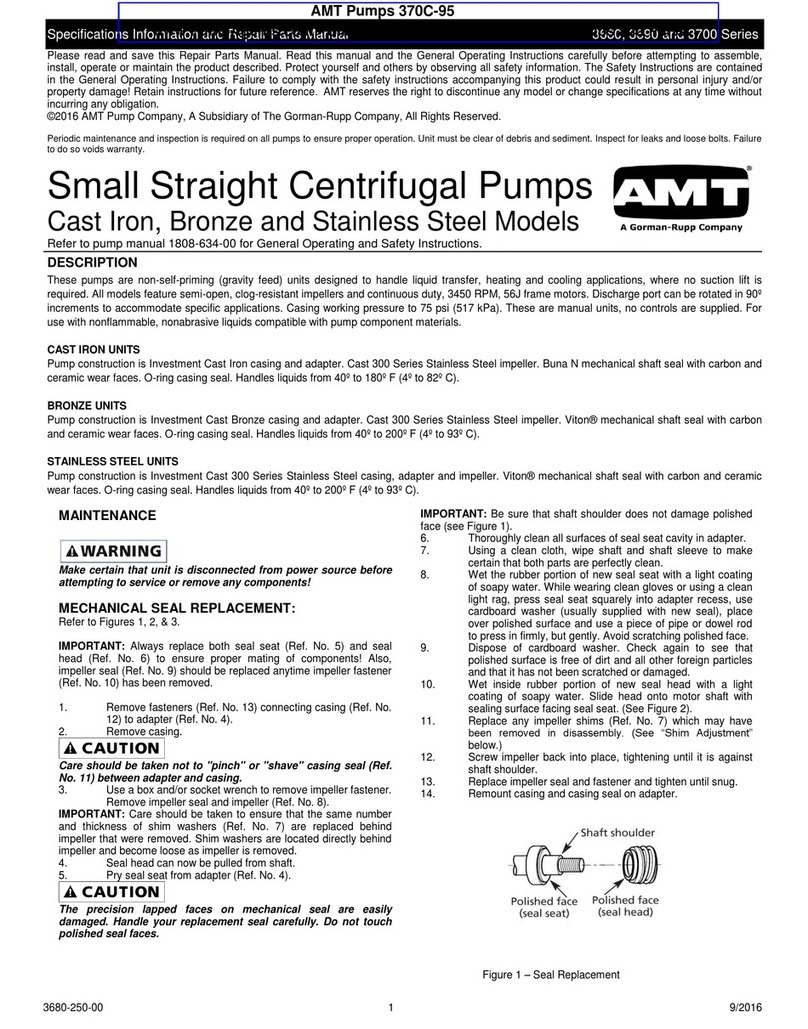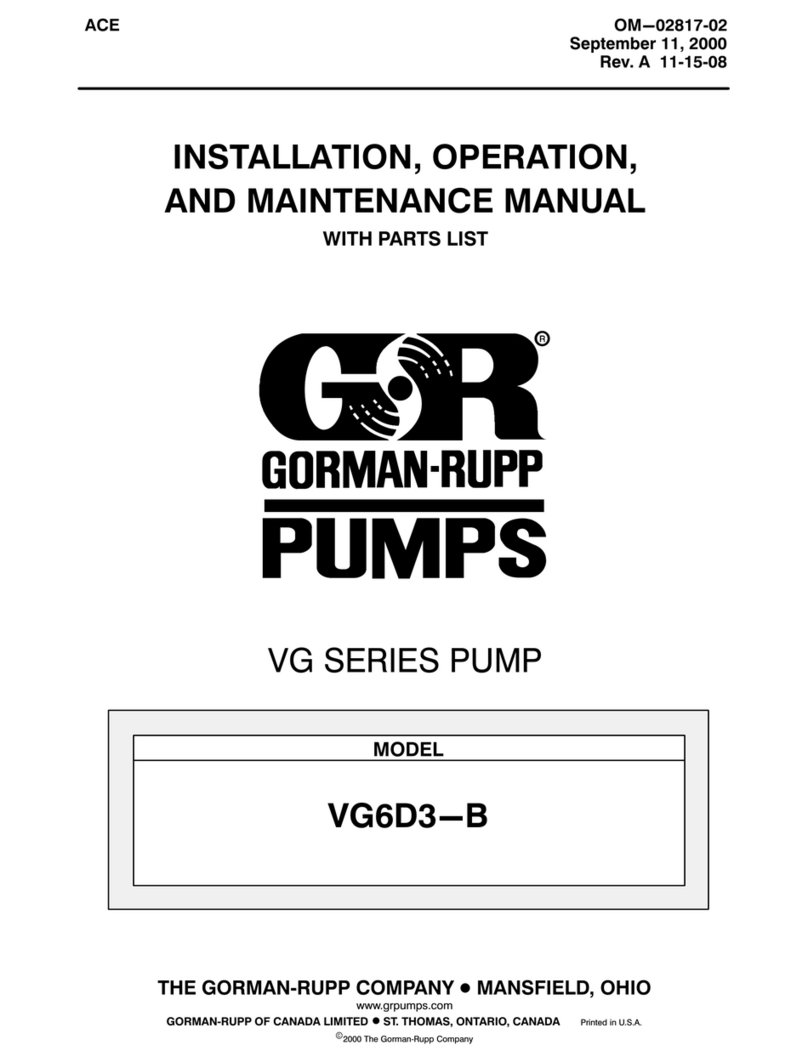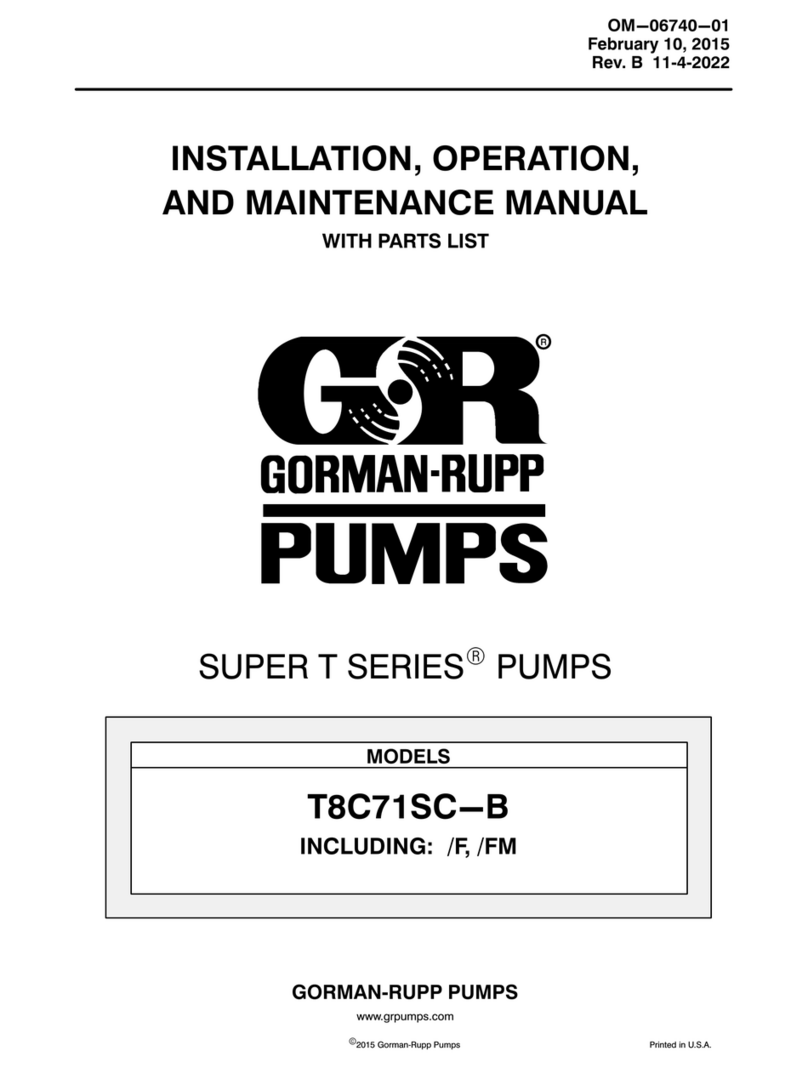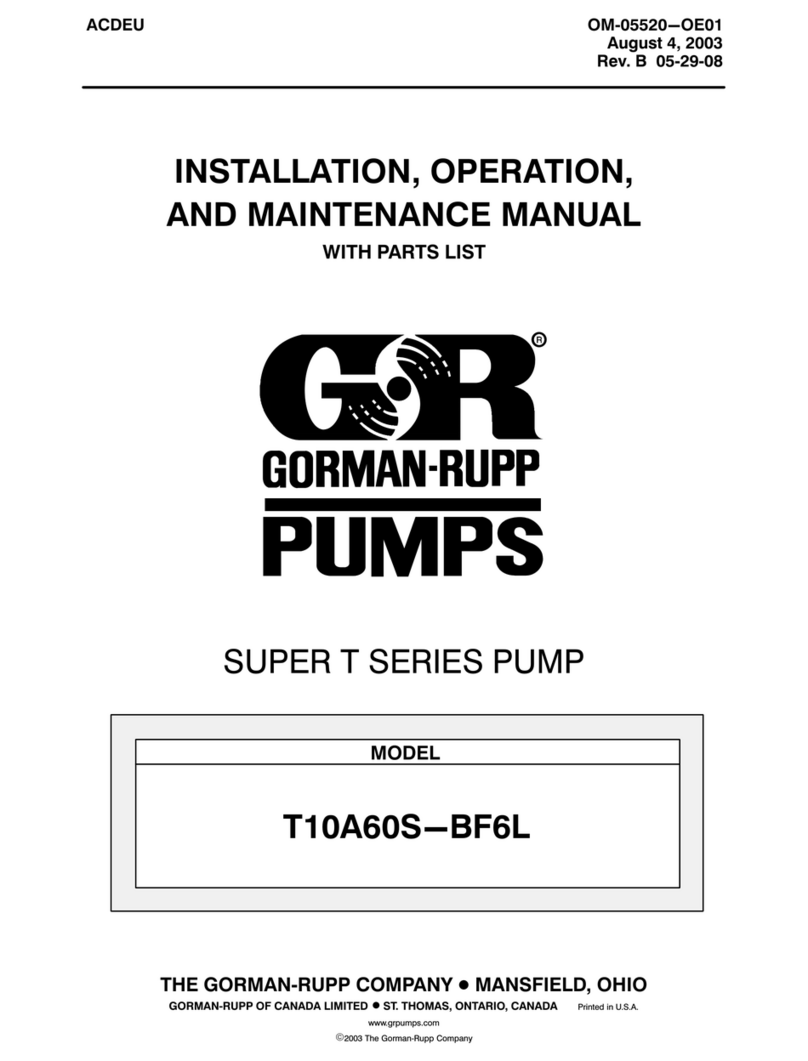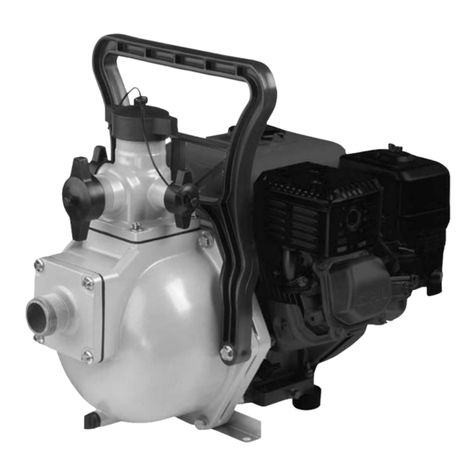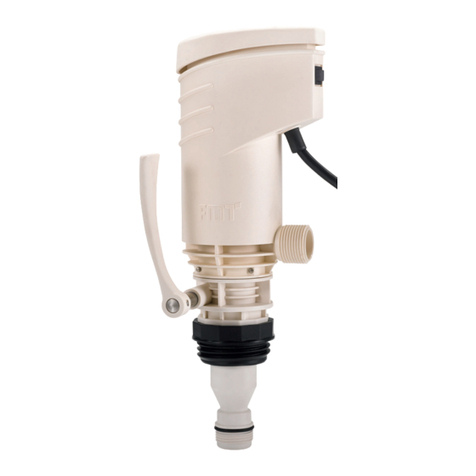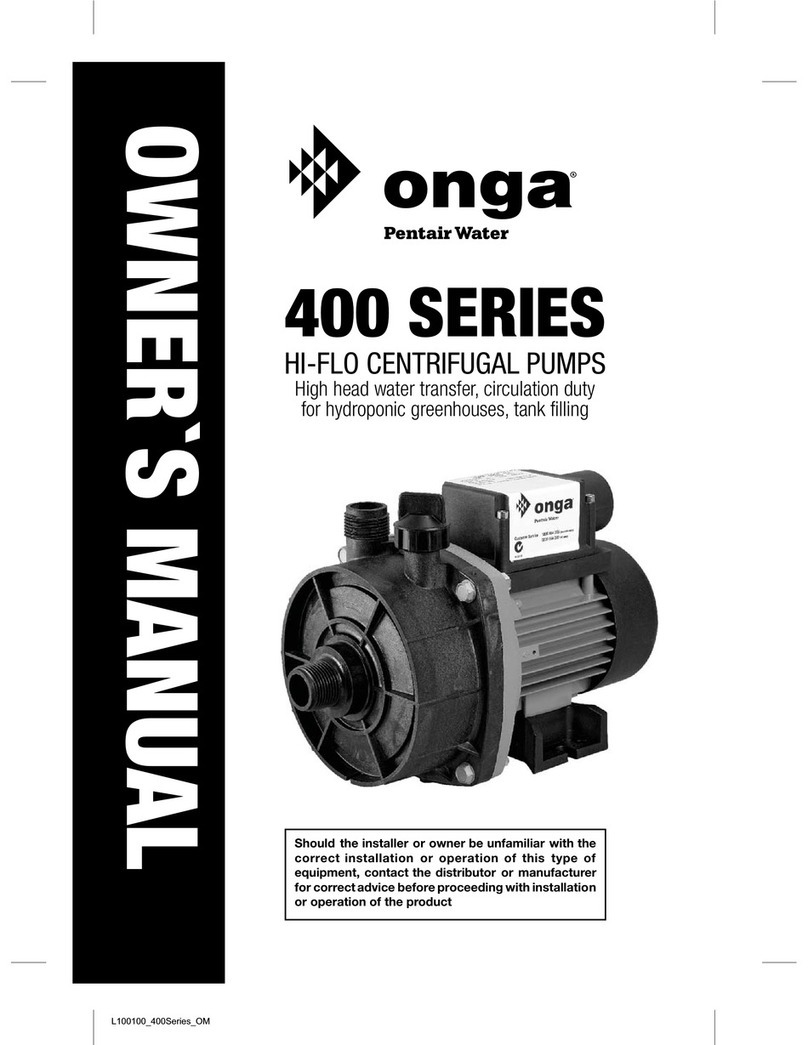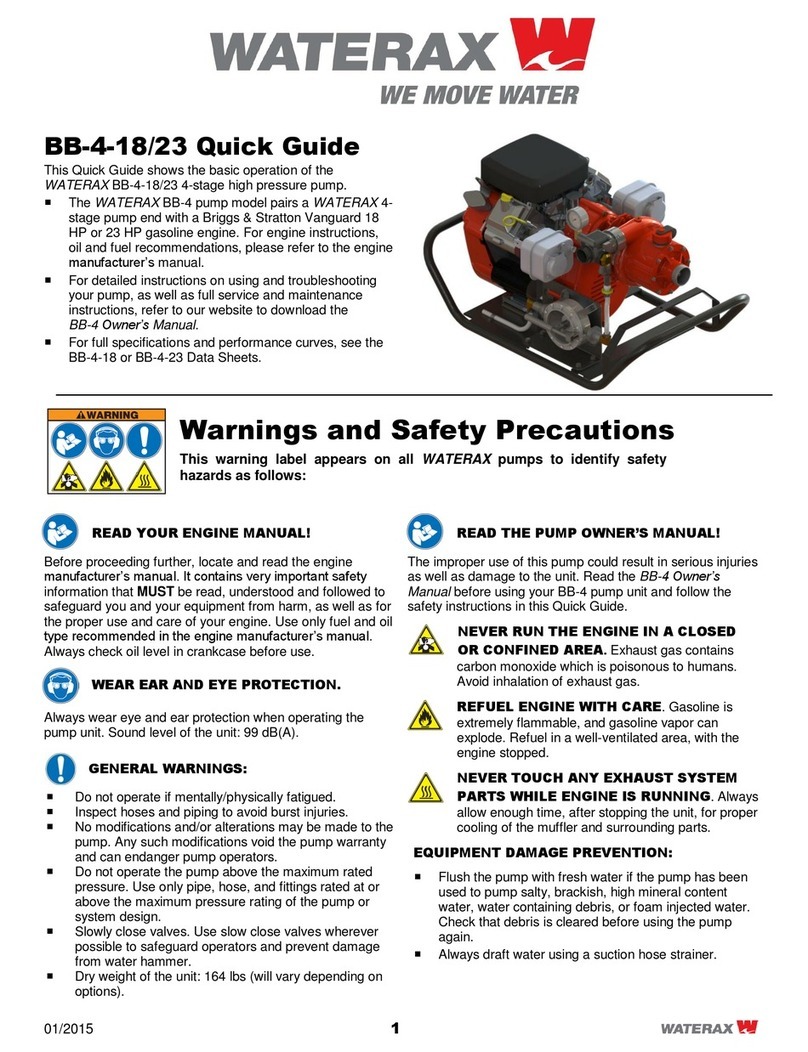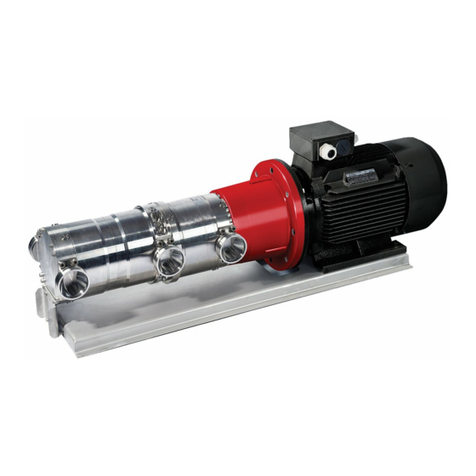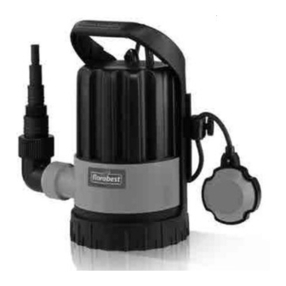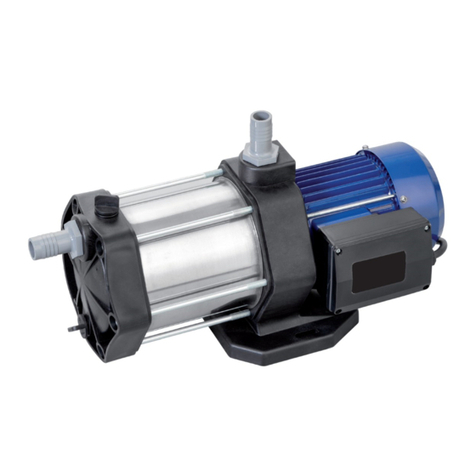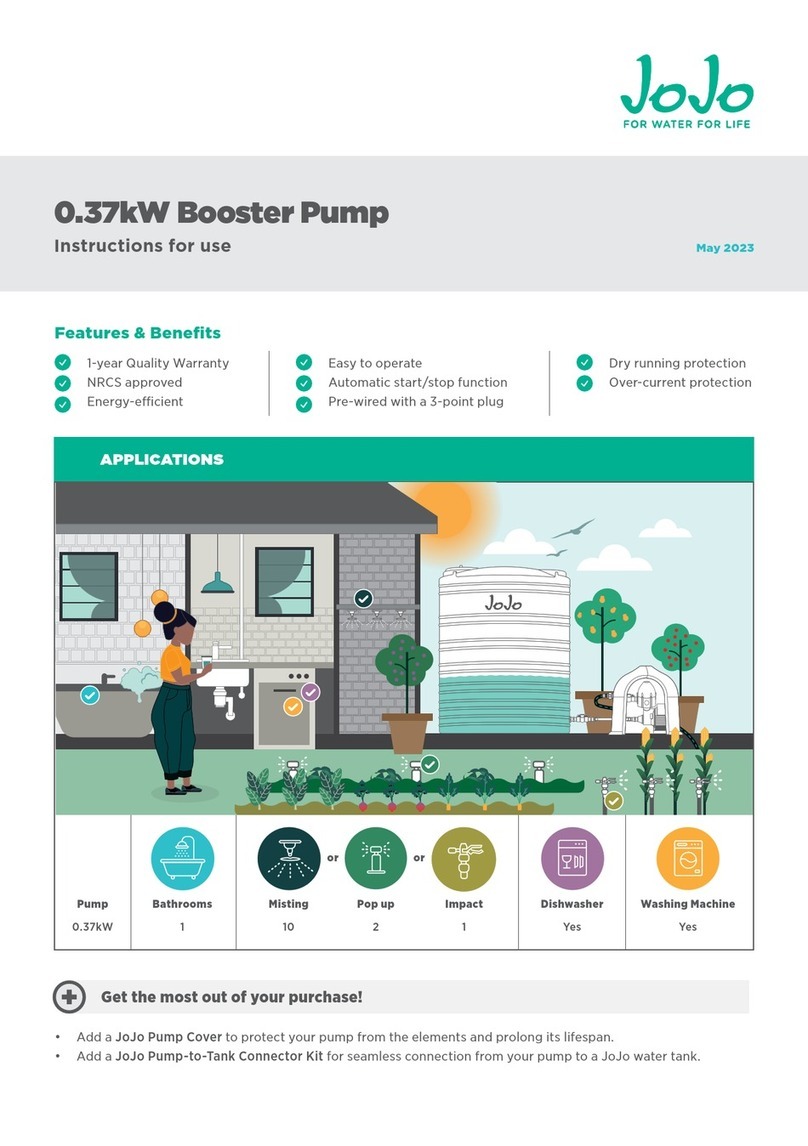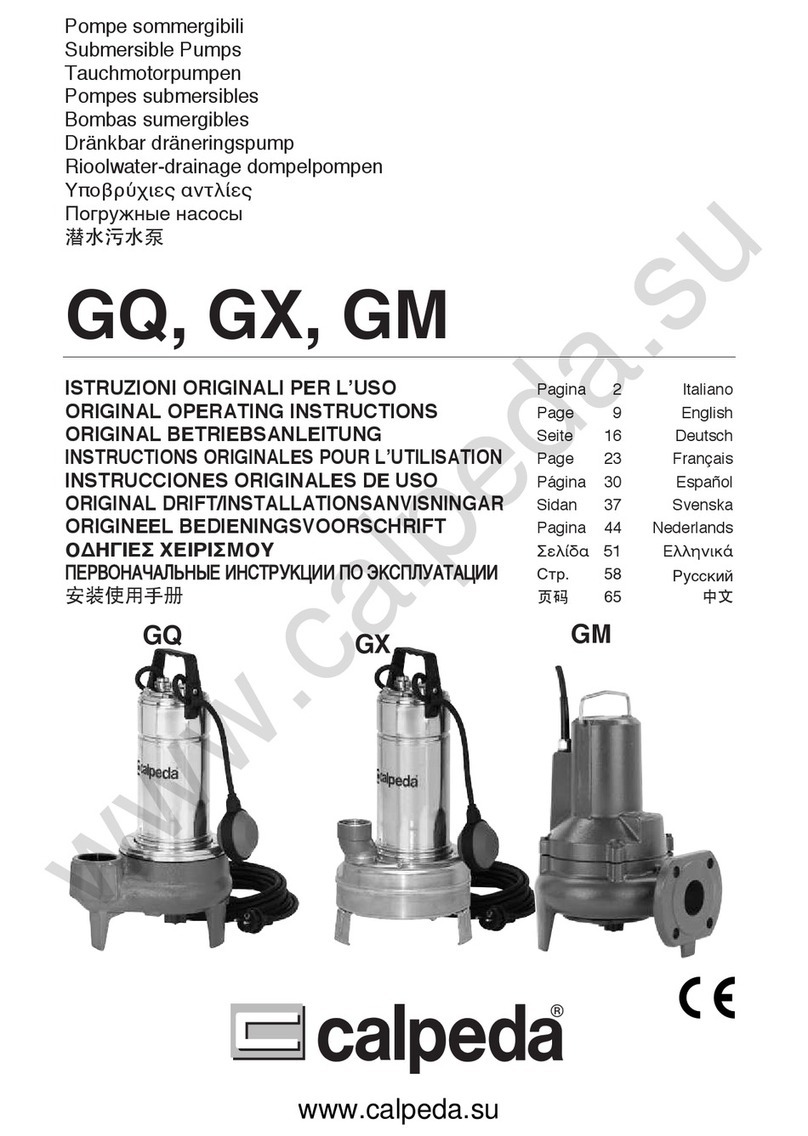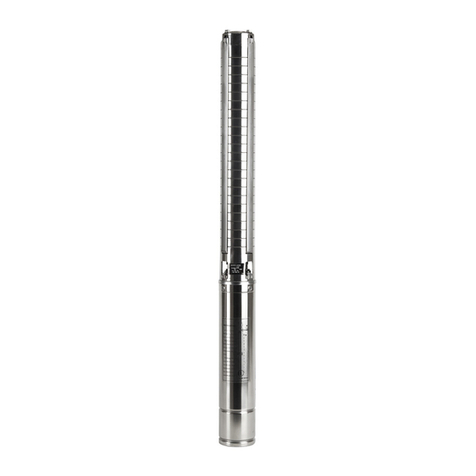
OM-06682 6500 SERIES
PAGE B - 2 INSTALLATION
AND REPAIR section of this manual and per
form duties as instructed.
e. If the pump has been stored for more than 12
months, some of the components or lubri
cants may have exceeded their maximum
shelf life. These must be inspected or re
placed to ensure maximum pump service.
If the maximum shelf life has been exceeded, or if
anything appears to be abnormal, contact your
Gorman‐Rupp distributor or the factory to deter
mine the repair or updating policy. Do not put the
pump into service until appropriate action has
been taken.
POSITIONING PUMP
Death or serious personal injury and
damage to the pump or components
can occur if proper lifting procedures
are not observed. Make certain that
hoists, chains, slings or cables are in
good working condition and of suffi
cient capacity and that they are posi
tioned so that loads will be balanced
and the pump or components will not be
damaged when lifting. Suction and dis
charge hoses and piping must be re
moved from the pump before lifting. Lift
the pump or component only as high as
necessary and keep personnel away
from suspended objects.
Lifting
Pump unit weights will vary depending on the
mounting and drive provided. Check the shipping
tag on the unit packaging for the actual weight, and
use lifting equipment with appropriate capacity.
Drain the pump and remove all customer‐installed
equipment such as suction and discharge hoses
or piping before attempting to lift existing, installed
units.
Mounting
Locate the pump in an accessible place as close as
practical to the liquid being pumped. Level mount
ing is essential for proper operation.
Proper mounting of the pump, driver and base is
critical to the performance of the pump. Improper
mounting can result in vibration, which can cause
damage to the pump and/or other system compo
nents.
The pumping unit must be securely mounted to a
foundation that is heavy enough to absorb any vi
bration, strain or shock, while providing perma
nent, rigid support for the unit.
Because pump installations vary due to the specif
ic application, this manual cannot possibly antici
pate and provide detailed instructions for every in
stallation. Therefore, it is recommended that the in
staller of the unit follow the recommendations pro
vided by the Hydraulic Institute in their Rotodynam
ic Centrifugal Pump Design and Application manu
al when designing and fabricating the foundation
upon which the pump, base and driver will be
mounted.
SUCTION AND DISCHARGE PIPING
The following is provided as general information for
suction and discharge piping. Because pump in
stallations vary due to the specific application, this
manual cannot possibly anticipate and provide de
tailed instructions for every installation. Therefore,
it is recommended that the installer follow the rec
ommendations provided by the Hydraulic Institute
in their Pump Piping for Rotodynamic Pumps man
ual for layout, design and installation of the system
piping.
Materials
Materials used in piping must be compatible with
the liquid being pumped. Using piping couplings
in suction lines is not recommended.
Line Configuration
Keep suction and discharge lines as straight as
possible to minimize friction losses. Make mini
mum use of elbows and fittings, which substan
tially increase friction loss. If elbows are necessary,
use the long‐radius type to minimize friction loss.





















